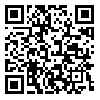Volume 35, Issue 136 (July 2022)
IJN 2022, 35(136): 218-231 |
Back to browse issues page
Download citation:
BibTeX | RIS | EndNote | Medlars | ProCite | Reference Manager | RefWorks
Send citation to:



BibTeX | RIS | EndNote | Medlars | ProCite | Reference Manager | RefWorks
Send citation to:
Salehi T, Haqqani H, Soltani M. Relationship Between Leadership Style of Nursing Managers and Caring Behaviors of Nurses in Selected Hospitals in Tehran, Iran. IJN 2022; 35 (136) :218-231
URL: http://ijn.iums.ac.ir/article-1-3534-en.html
URL: http://ijn.iums.ac.ir/article-1-3534-en.html
1- Department of Nursing Management, Nursing Care Research Center, School of Nursing and Midwifery, Iran University of Medical Sciences, Tehran, Iran.
2- Department of Biostatistics, Nursing Care Research Center, School of Nursing and Midwifery, Iran University of Medical Sciences, Tehran, Iran.
3- Department of Nursing Management, School of Nursing and Midwifery, Iran University of Medical Sciences, Tehran, Iran. ,marzyeh.soltani@gmail.com
2- Department of Biostatistics, Nursing Care Research Center, School of Nursing and Midwifery, Iran University of Medical Sciences, Tehran, Iran.
3- Department of Nursing Management, School of Nursing and Midwifery, Iran University of Medical Sciences, Tehran, Iran. ,
Abstract: (2813 Views)
Background & Aims: Caring behaviors are the main duties of nurses. Creating a favorable clinical environment for the use of nurses’ capabilities depends on many external and internal organizational factors. By choosing an appropriate leadership style, nursing managers can increase the participation of nurses in decision-making, empower nurses, create nurses’ working motivation, increase nurses’ job satisfaction, reduce tension, and improve the performance of the treatment team. And as a result, they maintain or improve the quality of care and the community health. This study aims to evaluate the relationship between the leadership styles of nursing managers and the caring behaviors of nurses in the selected hospitals in Tehran, Iran.
Materials & Methods: This is a descriptive correlational study with a cross-sectional design that was conducted from April to July 2021. Participants were 214 nurses working in selected hospitals affiliated to the Iran University of Medical Sciences in Tehran, Data collection tools were the Multifactor Leadership Questionnaire (MLQ) and the Wolf et al.’ Caring Behavior Inventory (CBI) as self-report tools. They took about 20-30 minutes to complete. Data analysis was done in SPSS software, version 16 using descriptive statistics (mean and standard deviation) and inferential statistics (independent t-test, analysis of variance). The significance level was set at 0.05.
Results: The highest score of CBI was related to the dimension of “professional knowledge and skill” (5.17± 0.66), while the lowest score was for the dimension of “communicating respectfully” (4.71 ± 0.64). which indicates that the physical dimension of care received more attention from nurses than the psychological dimension of care. The results showed a statistically significant relationship between the CBI dimension of communicating respectfully and the MLQ dimension of avoiding involvement (P=029). Transformational leadership style (3.43±0.82) was the dominant leadership style in nursing managers, and the caring behaviors of nurses had a statistically significant relationship with their age (P=0.032) and work experience (P=0.003).
Conclusion: It is recommended that nurses pay more attention to the communicative and emotional aspects of care while maintaining and improving their knowledge and skills. The education and use of the transformational leadership style should be considered by nursing managers; in this leadership style, the presence of a realistic vision and the participation of nurses in decision-making and attention to the individual needs of nurses provides the possibility of developing and empowering them to communicate respectfully.
Materials & Methods: This is a descriptive correlational study with a cross-sectional design that was conducted from April to July 2021. Participants were 214 nurses working in selected hospitals affiliated to the Iran University of Medical Sciences in Tehran, Data collection tools were the Multifactor Leadership Questionnaire (MLQ) and the Wolf et al.’ Caring Behavior Inventory (CBI) as self-report tools. They took about 20-30 minutes to complete. Data analysis was done in SPSS software, version 16 using descriptive statistics (mean and standard deviation) and inferential statistics (independent t-test, analysis of variance). The significance level was set at 0.05.
Results: The highest score of CBI was related to the dimension of “professional knowledge and skill” (5.17± 0.66), while the lowest score was for the dimension of “communicating respectfully” (4.71 ± 0.64). which indicates that the physical dimension of care received more attention from nurses than the psychological dimension of care. The results showed a statistically significant relationship between the CBI dimension of communicating respectfully and the MLQ dimension of avoiding involvement (P=029). Transformational leadership style (3.43±0.82) was the dominant leadership style in nursing managers, and the caring behaviors of nurses had a statistically significant relationship with their age (P=0.032) and work experience (P=0.003).
Conclusion: It is recommended that nurses pay more attention to the communicative and emotional aspects of care while maintaining and improving their knowledge and skills. The education and use of the transformational leadership style should be considered by nursing managers; in this leadership style, the presence of a realistic vision and the participation of nurses in decision-making and attention to the individual needs of nurses provides the possibility of developing and empowering them to communicate respectfully.
Type of Study: Research |
Subject:
nursing
Received: 2022/02/2 | Accepted: 2022/06/22 | Published: 2022/07/1
Received: 2022/02/2 | Accepted: 2022/06/22 | Published: 2022/07/1
Send email to the article author
| Rights and permissions | |
 |
This work is licensed under a Creative Commons Attribution-NonCommercial 4.0 International License. |







